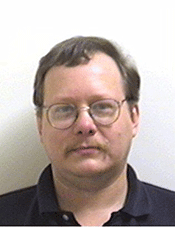- Cisco Community
- Technology and Support
- Service Providers
- Service Providers Knowledge Base
- PowerVu Network Control System - FAQ from live webcast
- Subscribe to RSS Feed
- Mark as New
- Mark as Read
- Bookmark
- Subscribe
- Printer Friendly Page
- Report Inappropriate Content
- Subscribe to RSS Feed
- Mark as New
- Mark as Read
- Bookmark
- Subscribe
- Printer Friendly Page
- Report Inappropriate Content
12-16-2013 12:39 PM - edited 08-28-2017 02:27 AM
Introduction

With Ron Weaver
During the live event Cisco expert Ron Weaver covered basic PNC operation, focusing on decoder management and service creation using a lab system. He also went through the steps of authorizing and managing decoders, creating and scrambling services, and allowing decoders to access the service.
Agenda
- Adding services
- How to access using the GUI
- How to create a program or virtual channel
- - Adding services
- Adding tiers to the program
- How to scramble the program
- Decoder operation
- Adding decoders to the database
- Decoder profiles
- How to authorize and deauthorize a decoder
- Searching the decoder database
- Open discussion on PNC operation
Ron Weaver is the tech lead for the DMN team in the Cisco Technical Assistance Center located in Lawrenceville, Georgia. Ron is responsible for supporting the DMN products for broadcasters, which include encoders, decoders, muxes, and control systems. He has worked for Cisco for 32 years, with 20 of those years working with digital video products and systems. Before joining the company, he spent four years in the air force, where he received his training in electronics.
Related Links:
General Questions
Q. What is the maximum number of unique viewer channels that each network ID can contain on a single Multiplex (MUX)?
A. The maximum number is 83, but that is not the limitation of the PowerVu Network Control (PNC) system. The PNC allows you to create more than 83, but there is a Tag Distribution Protocol (TDP) specification that a Service List Descripted can contain more than 83 channels. If you create more than 83, it breaks Service List Descripted, so it is per-signal.
Q. If I take the DPI (Digital Program Insertion) from a different encoder, is there anything special that I must do in order to keep the two encoders in sync for timing?
A. The answer depends on which encoder model you use. The older, classic encoder (1920) is a hexhead and msync that allows you to sync the encoders together, so you can pull video and audio from different chassis.
The next-generation encoders (1934 and 1954) do not have the msync function, so you can only pull video and audio from the same chassis.
The newer encoder (1936) only allows you to pull from the same chassis, but those chassis can perform multiple services within a single encoder. This means that you can pull video from one service encoder and audio from a different services-built encoder, as long as they come from the same chassis.
Q. With PNC Version 10.0.0.9, if a VBI (Vertical Blanking Interval) Process ID (PID) is placed in the PNC, the output of the MetroMux (9140) is not VBI, but shows as DCII (DigiCipher) on a bit stream analyzer. Is there a fix for this?
A. Yes. There is a fix for this. Contact the Cisco Technical Assistance Center (TAC).
Q. What is the risk when I perform CA (Conditional Access) service replacements if the receiver output is set to Pass-through? Will the alternate service PIDs be output from ASI/MoIP (MPEG over IP)?
A. If the receiver is in "Pass-Through" the TS will not be affected but the receiver downstream that are decoding the services will, so you must include them in the event.
Q. Do fingerprint triggers only work from the analog outputs of receivers?
A. No finger print trigger also works for the SDI out.
Q. What version of PNC is used in this presentation?
A. PNC Version 11.1 is used in this presentation. The screens appear similar to the old version. However, more fields were added, such as different text fields, which increase the number of characters for a particular field. The transcode tab was added also.
Q. What is the difference between dual mono and stereo audio channels?
A. With MPEG format, you can choose either dual mono or stereo. With dual mono, you have a greater degree of cross-talk, so you want the data in different languages (English and Spanish, for example). For this purpose, dual mono is preferable.
With stereo, the left and right channels contain the same type of content, so the level of cross-talk is different than dual mono.
There must be a greater degree of cross-talk in order to separate the two, such as different languages.
Related Information
- Mark as Read
- Mark as New
- Bookmark
- Permalink
- Report Inappropriate Content
Our PowerVu Management Console (PMC) is done via a HTML page.
Recently, we lost CA and force tuning control of our decoders.
The PMC executes all commands and reports no comand execution
errors or alarms. We put the PNC node off-line, and then back on-line,
with no sucess in restoring decoder control. The PMC version is 12.5.1.2.
Thank you.
Roland Reid
SportsMax Ltd.
Find answers to your questions by entering keywords or phrases in the Search bar above. New here? Use these resources to familiarize yourself with the community: